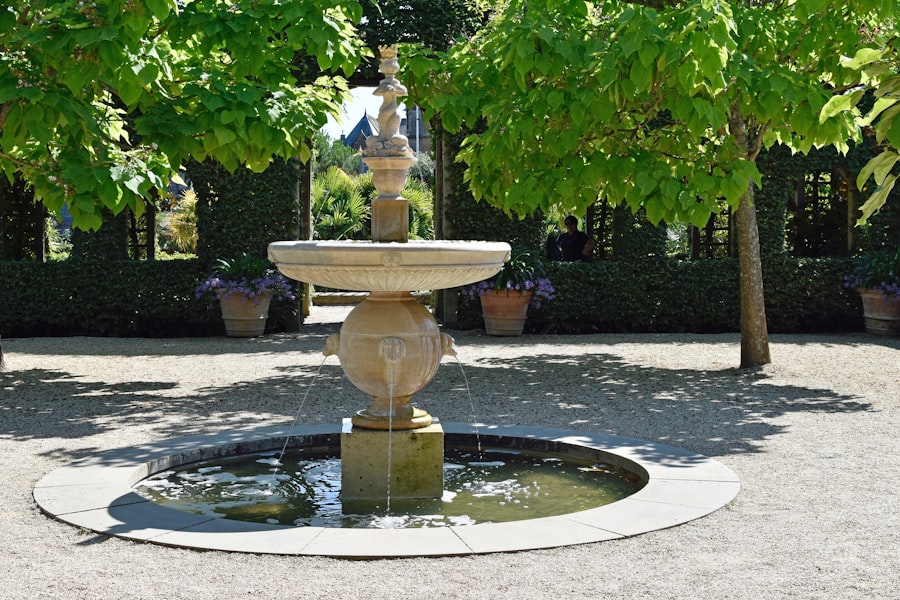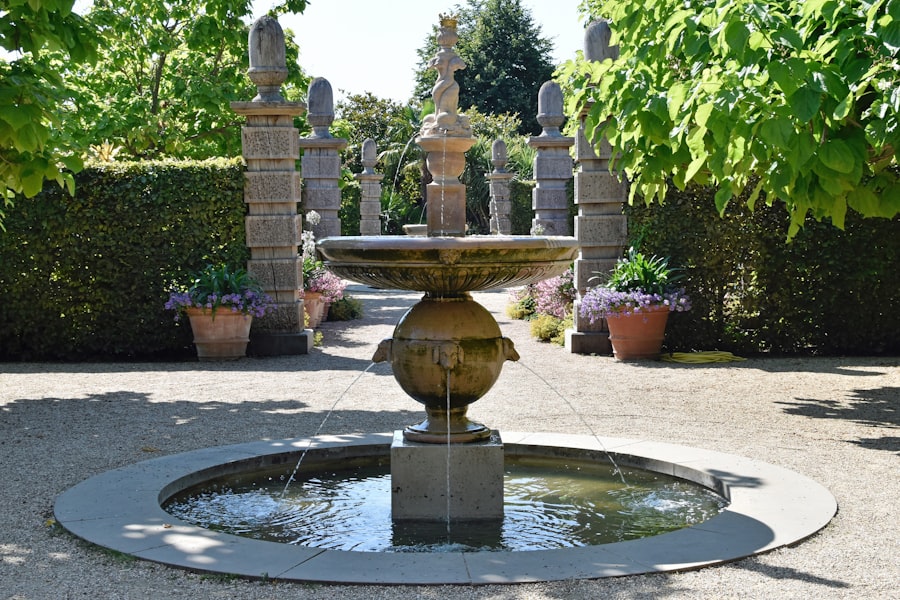When embarking on a landscaping project, the first step is to truly understand your client’s vision. This involves engaging in meaningful conversations to uncover their desires, preferences, and lifestyle needs. You should ask open-ended questions that encourage them to express their ideas freely.
What do they envision when they think of their outdoor space? Are they looking for a tranquil retreat, a vibrant garden for entertaining, or perhaps a functional area for children to play? By actively listening and taking notes, you can gather valuable insights that will guide the entire design process.
Moreover, it’s essential to consider the client’s existing environment and how it influences their vision. You might explore the architectural style of their home, the surrounding landscape, and even local climate conditions. Understanding these elements will help you create a cohesive design that harmonizes with the surroundings.
By synthesizing their aspirations with practical considerations, you can develop a clear and comprehensive vision that serves as the foundation for your landscaping project.
Key Takeaways
- Understanding the client’s vision is crucial for creating a landscape design that meets their needs and expectations.
- Selecting the right plants and materials involves considering factors such as climate, soil type, and maintenance requirements.
- Creating a functional and aesthetic design requires balancing practical elements with visual appeal.
- Incorporating sustainable and eco-friendly practices can help minimize environmental impact and reduce long-term maintenance costs.
- Utilizing proper irrigation and drainage systems is essential for maintaining the health and longevity of the landscape.
Selecting the Right Plants and Materials
Once you have a firm grasp of your client’s vision, the next step is selecting the right plants and materials that will bring that vision to life. This process requires a keen understanding of horticulture and design principles. You should consider factors such as climate, soil type, and sunlight exposure when choosing plants.
For instance, if your client lives in a region with hot summers, opting for drought-resistant plants can ensure a vibrant landscape without excessive water usage. In addition to plant selection, the materials you choose for hardscaping elements like patios, walkways, and retaining walls play a crucial role in the overall aesthetic and functionality of the space. You might explore various options such as natural stone, pavers, or concrete, each offering unique textures and colors.
It’s important to align these choices with your client’s style preferences while also considering durability and maintenance requirements. By thoughtfully selecting plants and materials, you can create a landscape that not only looks beautiful but also thrives in its environment.
Creating a Functional and Aesthetic Design

With the right plants and materials in mind, you can now focus on creating a design that balances functionality with aesthetic appeal. This involves sketching out layouts that incorporate various elements such as pathways, seating areas, and garden beds. You should think about how your client intends to use the space—will they host gatherings, enjoy quiet moments alone, or engage in gardening activities?
By understanding their lifestyle, you can design areas that cater to these needs while ensuring smooth flow and accessibility throughout the landscape. Aesthetics are equally important in this phase. You might consider color schemes, textures, and seasonal interest when arranging plants and hardscape features.
For example, incorporating a mix of flowering plants that bloom at different times of the year can provide year-round beauty. Additionally, using varying heights and forms can create visual interest and depth in the landscape. By blending functionality with aesthetic considerations, you can craft a design that not only meets your client’s practical needs but also delights their senses.
Incorporating Sustainable and Eco-Friendly Practices
In today’s world, incorporating sustainable and eco-friendly practices into landscaping is more important than ever. As you develop your design, consider how you can minimize environmental impact while enhancing the beauty of the space. One approach is to select native plants that are well-adapted to the local climate and require less water and maintenance.
These plants not only thrive in their environment but also support local wildlife by providing habitat and food sources. Additionally, you might explore options for reducing water usage through xeriscaping techniques or installing rain gardens that capture stormwater runoff. Implementing composting systems or using organic fertilizers can further promote soil health without introducing harmful chemicals into the ecosystem.
By prioritizing sustainability in your landscaping practices, you not only create an environmentally responsible design but also appeal to clients who value eco-conscious living.
Utilizing Proper Irrigation and Drainage Systems
Effective irrigation and drainage systems are vital components of any successful landscape design. As you plan these systems, consider your client’s water usage preferences and local regulations regarding irrigation practices. You might recommend installing drip irrigation systems that deliver water directly to plant roots, minimizing waste while ensuring optimal hydration.
This method is particularly beneficial for gardens with diverse plant types that have varying water needs. Drainage is equally crucial in preventing water accumulation that can lead to plant stress or damage to hardscape features. You should assess the site’s topography and soil composition to determine the best drainage solutions.
This could involve creating swales or installing French drains to redirect excess water away from vulnerable areas. By implementing proper irrigation and drainage systems, you can help ensure that your client’s landscape remains healthy and vibrant throughout the seasons.
Implementing Professional Installation Techniques

Planning and Execution
Once the design is finalized and all materials are selected, it’s time to implement professional installation techniques that will bring your vision to life. This phase requires careful planning and execution to ensure that every element is installed correctly and efficiently. You should create a detailed timeline for the installation process, outlining each step from site preparation to planting and hardscaping.
Best Practices for Installation
During installation, it’s essential to adhere to best practices for planting techniques, soil preparation, and hardscape construction. For instance, when planting trees or shrubs, you should dig holes that are wide enough to accommodate root systems while ensuring proper depth for healthy growth. Similarly, when laying pavers or stones for pathways, it’s important to ensure a stable base to prevent shifting over time.
Guaranteeing a Long-Lasting Landscape
By employing professional installation techniques, you can guarantee that your client’s landscape not only looks great but also stands the test of time.
Maintaining and Caring for the Landscape
After installation is complete, ongoing maintenance is key to preserving the beauty and health of the landscape. You should discuss maintenance plans with your client, outlining tasks such as pruning, fertilizing, mulching, and pest management. Providing them with a seasonal maintenance schedule can help them stay on track while ensuring their landscape remains vibrant throughout the year.
Additionally, educating your client about proper care techniques is essential for fostering a sense of ownership over their outdoor space. You might offer tips on watering practices or how to identify signs of plant stress or disease. By empowering your clients with knowledge about landscape care, you not only enhance their enjoyment of the space but also contribute to its long-term success.
Enhancing Outdoor Living Spaces
Incorporating outdoor living spaces into your landscape design can significantly enhance your client’s enjoyment of their property. These areas can serve as extensions of their home, providing opportunities for relaxation and entertainment in a natural setting. You might consider adding features such as patios, decks, outdoor kitchens, or fire pits that encourage social gatherings and family time.
When designing these spaces, it’s important to consider factors such as comfort, functionality, and aesthetics. For example, selecting durable furniture that withstands outdoor conditions while complementing the overall design can create inviting areas for lounging or dining. Additionally, incorporating elements like shade structures or pergolas can enhance comfort during hot summer days.
By thoughtfully enhancing outdoor living spaces, you create environments where clients can create lasting memories with family and friends.
Incorporating Lighting for Ambiance and Safety
Lighting plays a crucial role in transforming outdoor spaces into inviting environments after sunset. As you design your landscape, consider how strategic lighting can enhance both ambiance and safety. Pathway lights can illuminate walkways while providing guidance during evening gatherings; uplighting on trees or architectural features can create dramatic focal points that highlight the beauty of the landscape at night.
You should also explore energy-efficient lighting options such as LED fixtures that reduce electricity consumption while providing ample illumination. Additionally, incorporating smart lighting systems allows clients to control their outdoor lighting remotely or set schedules for automatic operation. By thoughtfully integrating lighting into your landscape design, you enhance its usability while creating an enchanting atmosphere for evening enjoyment.
Managing Budget and Timeline
Effective budget management is essential throughout the landscaping process to ensure that your project remains financially viable while meeting client expectations. At the outset of the project, you should work closely with your client to establish a clear budget that encompasses all aspects of design, materials, installation, and maintenance. Transparency about costs will help build trust and prevent misunderstandings down the line.
In addition to budget considerations, managing timelines is equally important for keeping projects on track. You should create a detailed schedule outlining key milestones throughout the installation process while allowing flexibility for unforeseen circumstances such as weather delays or material availability issues. Regular communication with your client about progress will help manage expectations and foster a positive working relationship throughout the project.
Providing Ongoing Support and Customer Service
Finally, providing ongoing support and exceptional customer service is vital for building lasting relationships with your clients beyond the initial project completion. After installation is finished, check in with your clients periodically to address any questions or concerns they may have about their new landscape. Offering follow-up consultations or maintenance services demonstrates your commitment to their satisfaction.
Additionally, consider creating resources such as care guides or newsletters that provide valuable information on seasonal maintenance tips or new landscaping trends. By positioning yourself as a knowledgeable resource in their landscaping journey, you not only enhance their experience but also encourage referrals and repeat business in the future. Ultimately, exceptional customer service fosters loyalty and establishes you as a trusted partner in creating beautiful outdoor spaces.
If you’re interested in learning more about landscaping services in different cities, check out this article on Landscaping Service in New Orleans, Louisiana. It provides insights into the unique challenges and opportunities of creating lush and vibrant outdoor spaces in the Big Easy. Additionally, if you’re looking for tips on finding a reputable landscaping company, you may want to read this article on How to Find a Landscaping Company that is Licensed and Insured. It offers valuable advice on selecting a trustworthy and professional service provider for your landscaping needs.
FAQs
What are landscaping services?
Landscaping services refer to the professional services provided to design, install, and maintain outdoor spaces such as gardens, lawns, and other green areas.
What are the benefits of hiring landscaping services?
Hiring landscaping services can improve the aesthetic appeal of outdoor spaces, increase property value, and create a more enjoyable and functional outdoor environment.
What are some common landscaping services offered?
Common landscaping services include lawn care, garden design and installation, irrigation system installation and maintenance, tree and shrub care, and hardscape design and installation.
How do landscaping services help in crafting lush and vibrant spaces?
Landscaping services help in crafting lush and vibrant spaces by utilizing professional expertise in plant selection, design principles, and maintenance techniques to create visually appealing and healthy outdoor environments.
What should I consider when hiring landscaping services?
When hiring landscaping services, consider the company’s experience, reputation, portfolio of past work, and the range of services they offer. It’s also important to discuss your specific needs and expectations with the service provider.
